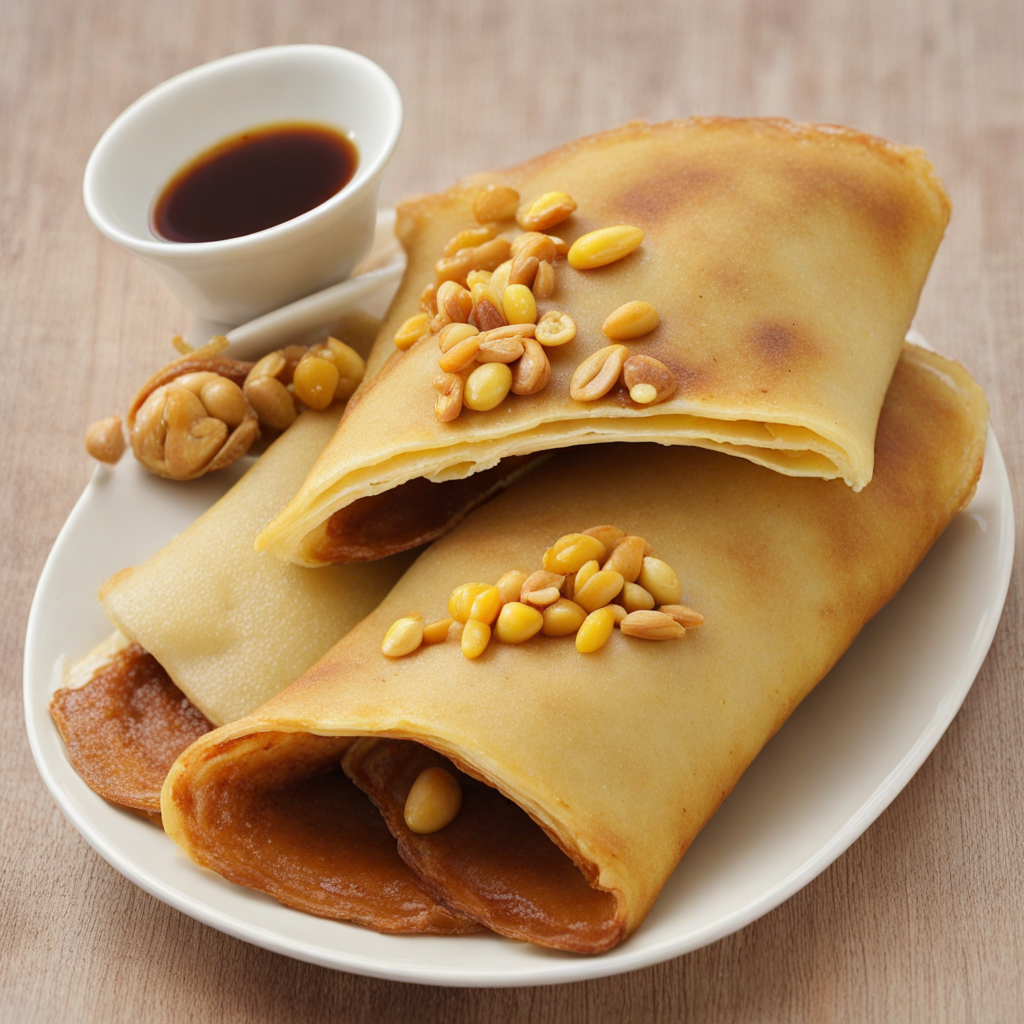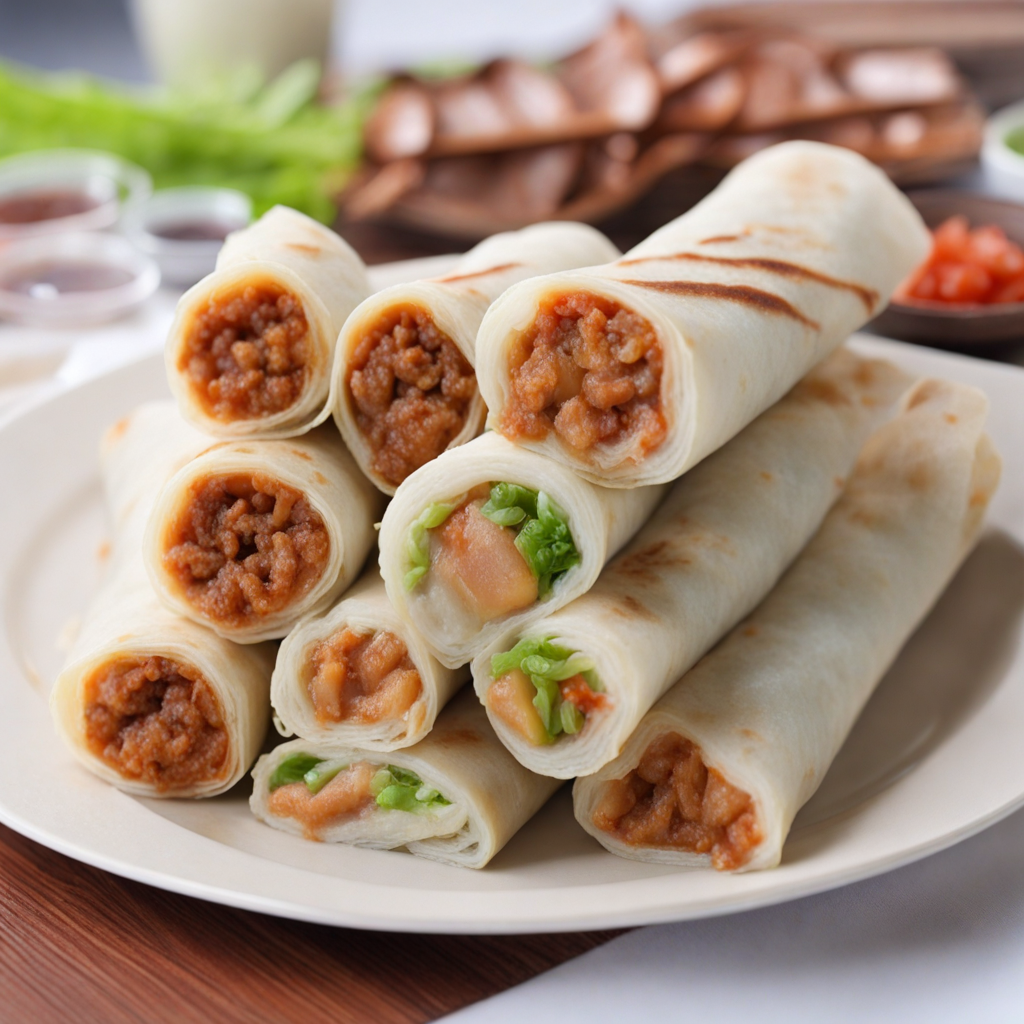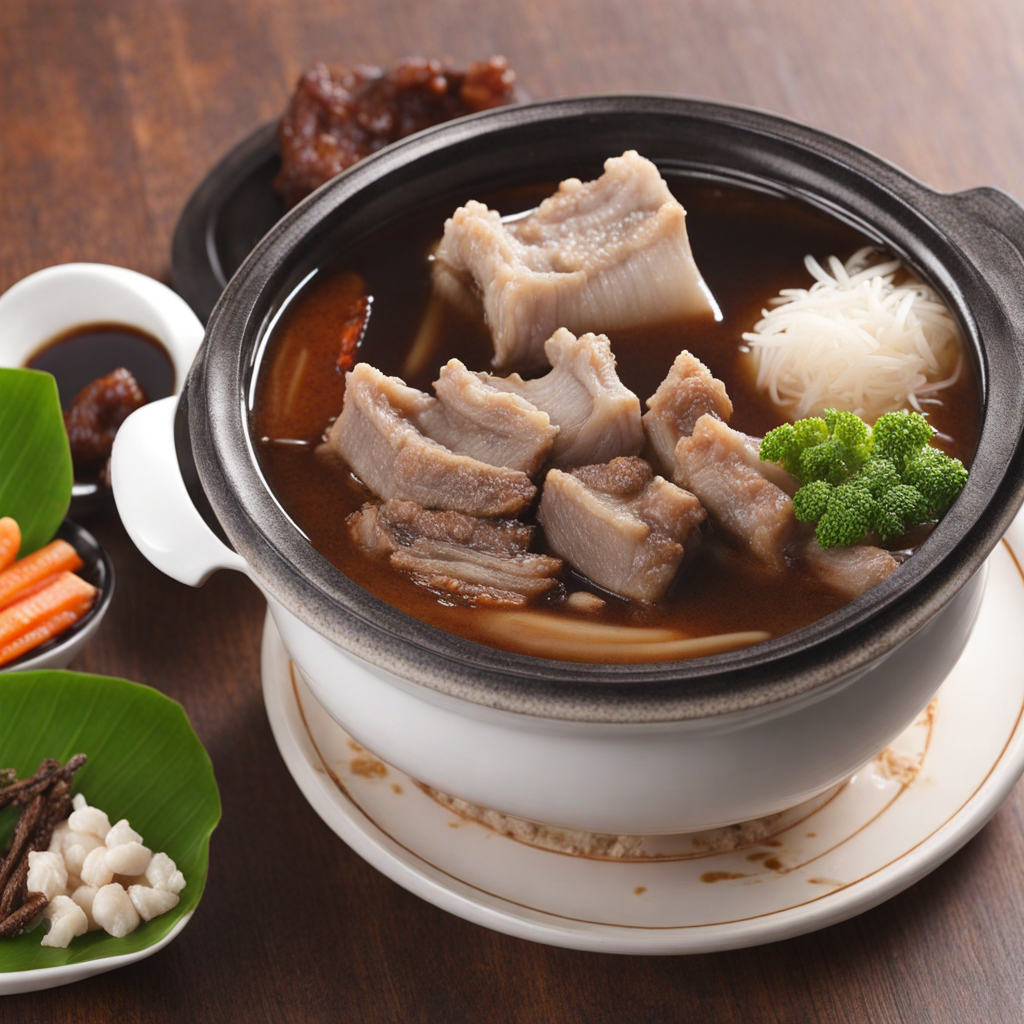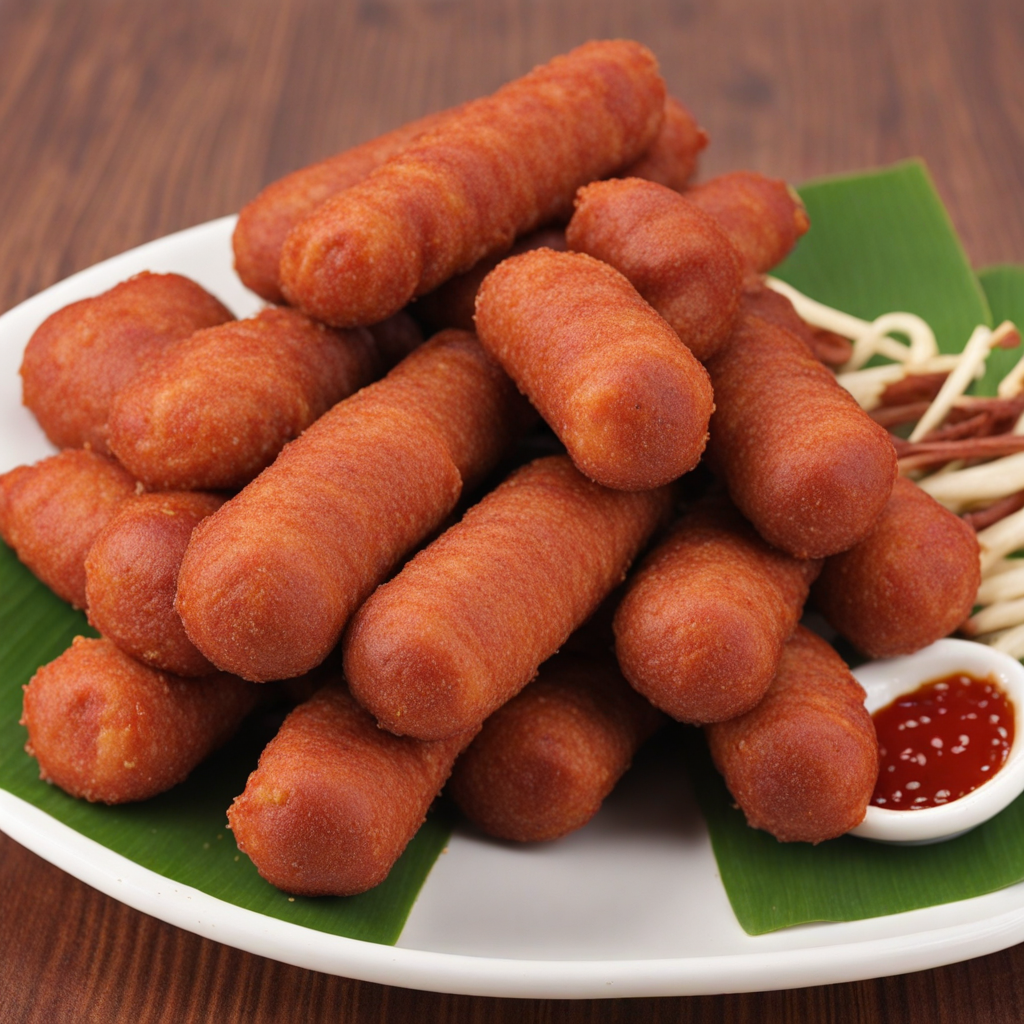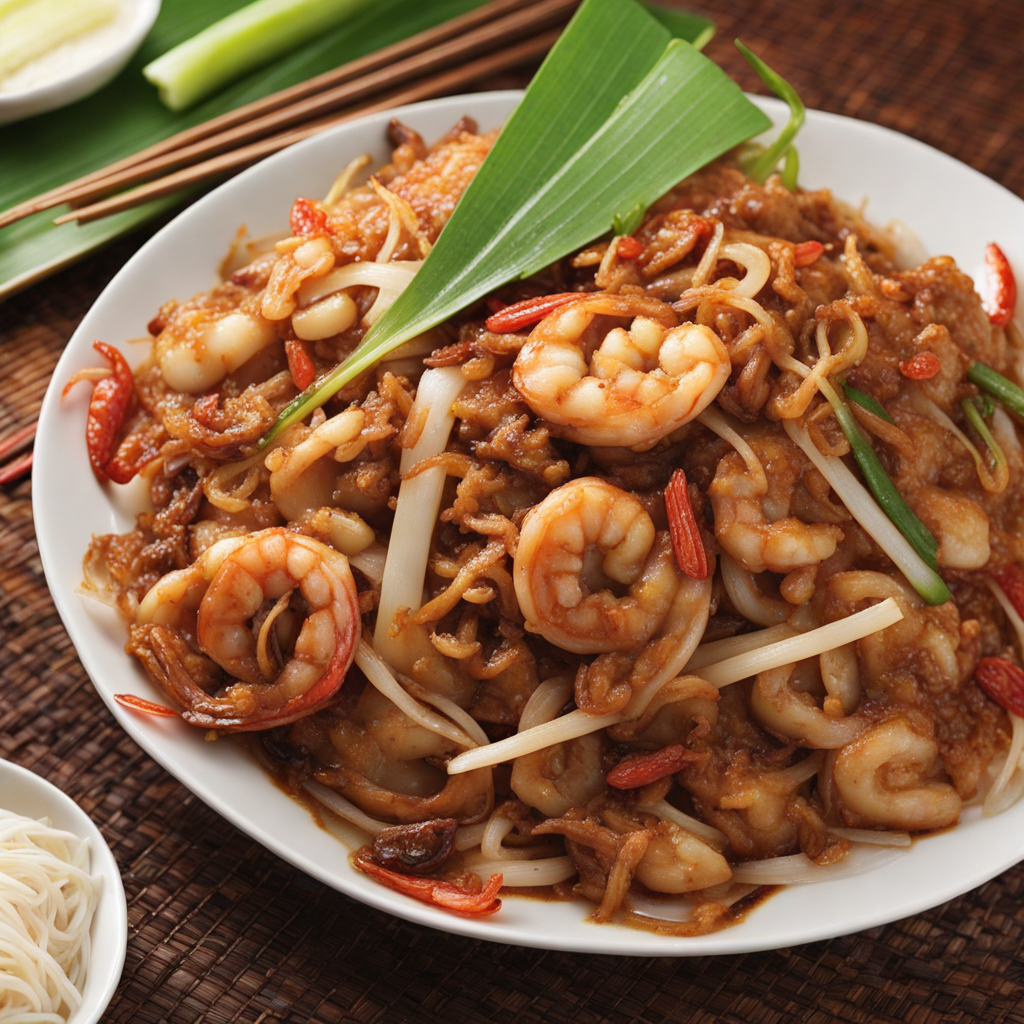Apam Balik
煎饼, known as "jianbing" in Mandarin, is a popular street food originating from China that has found a warm reception in Malaysia, where it has been adapted and embraced by local food culture. This savory crepe has a rich history that traces back to the northern provinces of China, particularly Shandong, where it was traditionally consumed as a breakfast dish. Over the years, it has crossed borders and evolved, incorporating a variety of local ingredients and flavors, making it a beloved snack in Malaysia. The flavor profile of Malaysian jianbing is an enticing combination of savory, slightly sweet, and umami notes. The crepe itself is thin and slightly crispy on the edges, with a tender center. The filling often includes a harmonious blend of spices, sauces, and various ingredients that contribute to its unique taste. Common condiments include hoisin sauce, chili sauce, and a sprinkle of sesame seeds, which add depth and complexity. The inclusion of fresh herbs, such as cilantro or green onions, introduces a refreshing brightness that balances the richness of the other components. Preparation of jianbing is an art form in itself, typically performed by skilled street vendors who have perfected their technique over years of practice. The process begins with a thin batter made from a mixture of wheat flour and sometimes mung bean flour, which is poured onto a hot griddle or flat iron pan. As the batter spreads out, water is often added to create steam, resulting in a soft texture. The vendor then
How It Became This Dish
The Culinary Journey of 煎饼 (Jian Bing) in Malaysia #### Origins and Historical Context The story of 煎饼, or Jian Bing, is a tapestry woven through centuries of cultural exchange, migration, and culinary innovation. While Jian Bing is often associated with its roots in China, particularly in the northern provinces, its presence in Malaysia is a testament to the broader narrative of food globalization and adaptation. The dish is believed to have originated in the region around the Shandong province, where it was traditionally made as a simple breakfast crepe, often filled with ingredients like egg, green onions, and various sauces. As Chinese migrants began to travel across Southeast Asia in the 19th and early 20th centuries, they brought with them their culinary traditions, including Jian Bing. This migration was part of a larger movement of people influenced by economic opportunities, colonial expansion, and the search for a better life. In Malaysia, the dish underwent a transformation, influenced by local ingredients, tastes, and culinary practices. #### Cultural Significance In Malaysia, Jian Bing is not just a meal; it embodies a fusion of cultures and flavors. The dish is often enjoyed as a street food, reflecting the vibrant and diverse culinary landscape of Malaysian society. The multicultural fabric of the nation—comprising Malay, Chinese, Indian, and indigenous cultures—has led to a unique interpretation of Jian Bing that resonates with various communities. The preparation of Jian Bing has become a performance art in itself. Street vendors skillfully spread the batter on a hot griddle, crack an egg on top, and add an array of fillings, which might include local favorites like spicy sambal, fried shallots, and various vegetables. This interactive cooking process captivates onlookers, making it a communal experience that draws people together. Moreover, Jian Bing has been embraced during festivals and celebrations, symbolizing prosperity and abundance. It is often featured in family gatherings, reinforcing its role as a food that brings people together. In this way, Jian Bing transcends mere sustenance; it is a cultural artifact that tells the story of Malaysia's rich history and its people's shared experiences. #### Development Over Time As Malaysia evolved into a melting pot of cultures, so too did Jian Bing. The dish experienced several phases of development, adapting to the changing culinary landscape and the tastes of the Malaysian populace. Early Adaptations: The initial iterations of Jian Bing in Malaysia maintained much of the traditional Chinese influence. Vendors would prepare the crepes on the streets, similar to how it was done in China. However, local ingredients began to seep into the recipe. Instead of the soy sauce and traditional Chinese pickles, vendors started incorporating Malaysian staples like chili sauce, peanut sauce, and even rendang spices, creating a unique flavor profile that appealed to Malaysian palates. Modernization and Urbanization: The late 20th century saw significant urbanization in Malaysia, leading to the rise of modern food courts and hawker centers. Jian Bing adapted to these new settings, becoming a popular choice among busy urban dwellers seeking quick, satisfying meals. The dish began to appear in various forms, from the classic street-side preparation to more gourmet versions in restaurants, reflecting the changing dining culture. Fusion and Innovation: As globalization intensified in the early 21st century, Jian Bing further evolved. Influenced by international culinary trends, chefs began experimenting with the dish, introducing unconventional fillings like cheese, avocado, and even fusion ingredients like kimchi. This innovation attracted a younger audience, blending traditional and modern flavors in a way that resonated with contemporary tastes. Additionally, Jian Bing has become a canvas for culinary creativity, with gourmet versions appearing in upscale eateries that focus on artisanal ingredients and presentation. These adaptations highlight a growing trend in Malaysia where traditional street foods are elevated to fine dining, showcasing the dish’s versatility and appeal across different demographics. #### Current Trends and the Future of Jian Bing Today, Jian Bing continues to thrive in Malaysia, celebrated for its flavor, convenience, and cultural significance. It has gained a following not only among locals but also among tourists seeking an authentic Malaysian street food experience. Social media platforms have played a crucial role in popularizing Jian Bing, with food bloggers and influencers showcasing the dish's preparation and unique variations, drawing attention to its vibrant street food culture. Moreover, as the global culinary landscape becomes increasingly interconnected, the potential for Jian Bing to evolve further is immense. The ongoing fusion of flavors, as seen in other global cuisines, suggests that Jian Bing will continue to adapt, reflecting the dynamic nature of Malaysian society. As new generations embrace and reinterpret their culinary heritage, Jian Bing will likely remain a beloved staple on the streets of Malaysia, bridging the past with the present. #### Conclusion The history of 煎饼 (Jian Bing) in Malaysia is a fascinating journey that mirrors the country’s multicultural identity and culinary evolution. From its origins in China to its contemporary status as a beloved street food, Jian Bing represents a fusion of flavors and cultures that has captivated the hearts—and appetites—of many. As it continues to evolve, Jian Bing stands as a delicious reminder of the rich tapestry of history, culture, and community that defines Malaysian cuisine. Whether enjoyed as a quick snack or a festive treat, Jian Bing remains an enduring symbol of Malaysia's vibrant culinary heritage.
You may like
Discover local flavors from Malaysia


